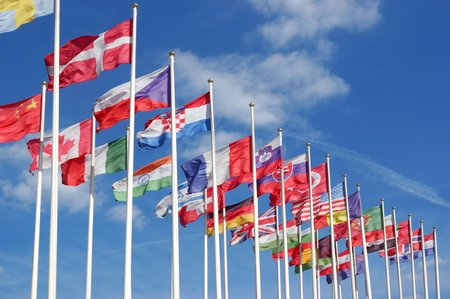
International Ammonia and Methane Policy: The Gothenburg Protocol
The Convention on Long-Range Transboundary Air Pollution (LRTAP) is the main international legal framework for limiting, progressively reducing and preventing air pollution. More than 50 countries are parties to the Convention, including the EU member states, Canada, the United States and several countries in Central Asia. The Convention was agreed in Geneva in 1979 and was the first international legally binding instrument to deal with problems of air pollution on a broad regional basis. Compliance is monitored by the Economic Commission for Europe (UNECE).. It entered into force in 1983 and has been extended by eight specific protocols. One of them:
- the Gothenburg Protocol (Multicomponent Protocol) on the prevention of acidification, eutrophication and ground-level ozone (adopted in 1999, entered into force on 17 May 2005, revised in 2012)
While other protocols considered only a single pollutant, the Gothenburg Protocol concerns the effects of sulphur dioxide, nitrogen oxides, ammonia and volatile organic compounds (VOCs) and ozone. The Gothenburg Protocol is characterised by its cross-cutting approach and is therefore also referred to as the ‘Multi-Effect’ or ‘Multicomponent’ Protocol.

Changes 2012
The Gothenburg Protocol was amended in 2012 to include national emission reduction commitments to be achieved by 2020 and beyond. Several of the Protocol's technical annexes were updated with emission ceilings for both major stationary and mobile sources. The revised Protocol is the first binding agreement on emission reduction commitments for particulate matter, including climate-damaging soot particles. It also introduced flexibilities to facilitate accession of new Parties, mainly countries in Eastern and South-Eastern Europe, the Caucasus and Central Asia. Another novelty of the revised Protocol is a flexibility mechanism that allows Parties to propose adjustments to their emission inventories or emission reduction commitments recognizing both the uncertainties inherent in estimating and projecting emission levels and the need for continuous scientific and methodological improvements under the Convention.
The European National Emission Ceilings Directive builds on the revised Gothenburg Protocol.
Current revision
As part of the Clean Air Farming project, the European Environmental Bureau is participating in the meetings of the Executive Body of the LRTAP Convention. The meetings focused initially on finalising the long-term strategy of the Convention for the period 2020-2030, with the contribution of civil society organisations playing an important role in monitoring policy processes and setting ambitious targets to combat air pollution.
Results
While efforts to reduce emissions of nitrogen oxides and sulphur dioxide have been relatively successful, ammonia emissions have not been significantly reduced to date. An effective reduction of particle concentrations can only be achieved by simultaneously considering the emissions of all precursor gases.
In Europe, mean ground-level ozone concentrations are increasing. Efforts to reduce ozone precursor gases, in particular methane, must therefore be stepped up. Agriculture accounts for more than half of total methane emissions. It is therefore necessary to prioritise mitigation measures in this area. Methane emissions are not yet directly regulated by climate protection legislation or the Gothenburg Protocol.

